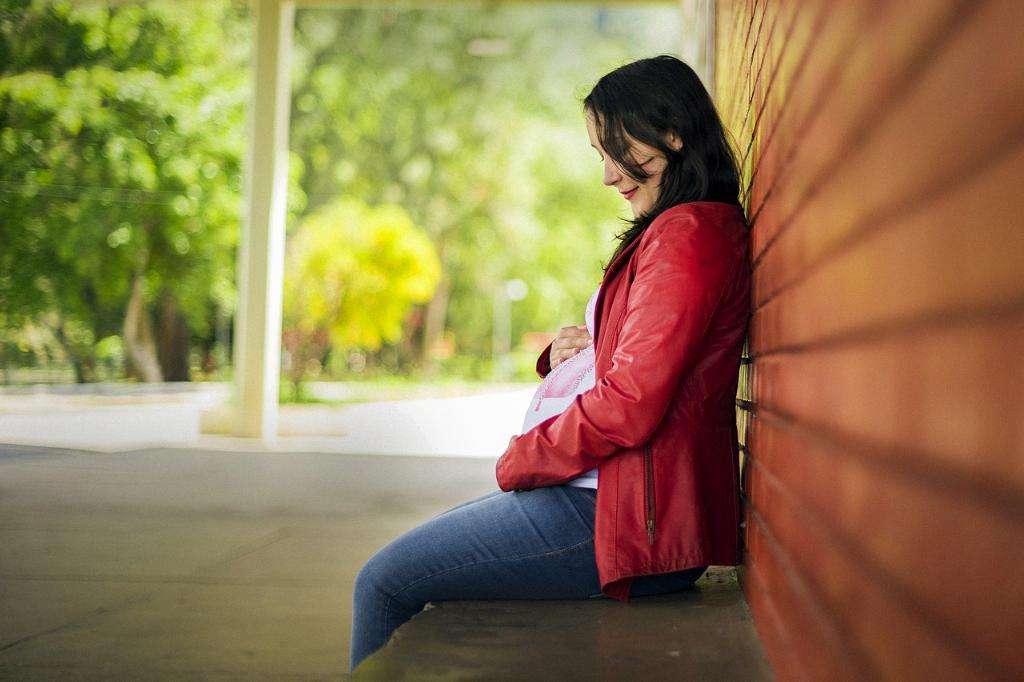During pregnancy, many women experience breast pain or tenderness, which is a common symptom caused by hormonal changes in the body. This discomfort typically occurs in the early stages of pregnancy and may subside as the pregnancy progresses. However, the intensity and duration of breast pain can vary from woman to woman.
First Trimester Breast Tenderness
For most women, breast tenderness is often one of the earliest signs of pregnancy. This can start as early as one to two weeks after conception. The hormonal changes, particularly an increase in progesterone levels, can lead to swollen, tender breasts. This discomfort is typically most pronounced during the first trimester.
Second Trimester Relief
As you move into the second trimester of pregnancy, around weeks 13 to 28, you may find that your breast pain subsides. The hormonal fluctuations tend to level off during this time, leading to a decrease in breast tenderness for many women. This period of relief allows many expectant mothers to enjoy a more comfortable phase of their pregnancy.
Return of Breast Discomfort in the Third Trimester
However, as you progress into the third trimester, typically starting around week 29, your breasts may become more sensitive again. This is because your body is preparing for breastfeeding, and your breasts are growing and changing to accommodate milk production. The increased size and weight of your breasts can lead to renewed tenderness and discomfort.
Management and Relief
While breast pain during pregnancy is common and often a normal part of the process, there are ways to help manage and alleviate the discomfort. Wearing a well-fitting, supportive bra can provide added comfort and reduce strain on your breasts. Some women find relief from warm compresses or gentle massages to alleviate tenderness.
When to Seek Medical Advice
If you experience severe or persistent breast pain, or if you notice any unusual changes in your breasts, it is important to consult your healthcare provider. While breast tenderness is often a normal symptom of pregnancy, it is essential to rule out any underlying issues or complications.
Each Pregnancy is Unique
It is important to remember that every pregnancy is different, and the experience of breast pain can vary widely among women. Some may find that their breast tenderness resolves quickly, while others may experience discomfort throughout their pregnancy. It is essential to listen to your body and seek support if needed.
Emotional Impact
It is also important to address the emotional aspect of breast pain during pregnancy. The physical discomfort can be accompanied by emotional changes and challenges. Talking to your healthcare provider, a trusted friend, or a support group can help you navigate this aspect of the pregnancy journey.
Self-Care Strategies
Engaging in self-care practices such as relaxation techniques, gentle exercise, and adequate rest can also support your overall well-being during pregnancy. Taking time for yourself and prioritizing your mental and emotional health can contribute to a more positive experience.
Preparing for Breastfeeding
As your body prepares for lactation, experiencing breast pain can serve as a reminder of the upcoming changes and demands of breastfeeding. Educating yourself about breastfeeding techniques, seeking out resources, and preparing for the postpartum period can help you feel more empowered and informed.
Conclusion
In conclusion, breast pain during pregnancy is a common occurrence that can vary in intensity and duration. While many women find relief from breast tenderness in the second trimester, it may return in the third trimester as the body prepares for lactation. Managing discomfort, seeking medical advice when needed, and prioritizing self-care and emotional well-being can help you navigate this aspect of the pregnancy journey.

